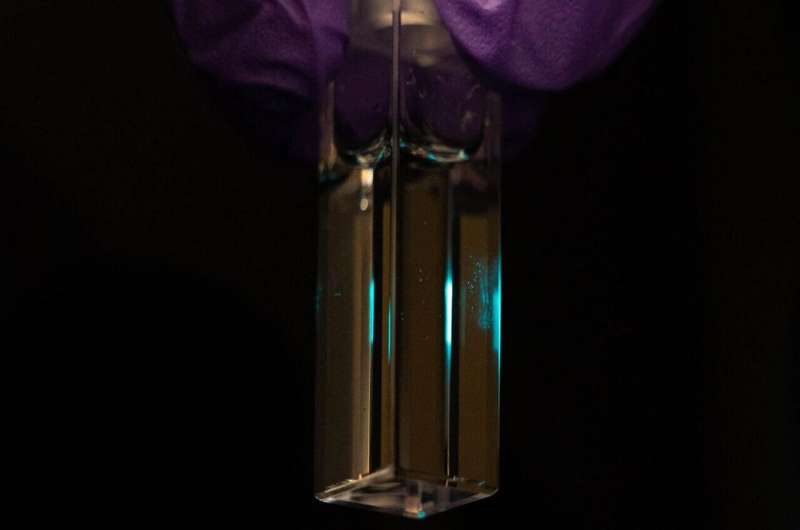
Shining a beam of light into
potentially contaminated water samples may hold the key to real-time detection
of hydrocarbons and pesticides in water.
UBC Okanagan researchers are testing the use of fluorescence to monitor water quality. The results, they say, show great promise.
When a beam of light is shone into the water, it excites the electrons in molecules of certain compounds and causes them to emit light. The characteristics of the emitted light are like a fingerprint and can be used to identify certain contaminants, explains Nicolas Peleato, an assistant professor at UBCO's School of Engineering.
"The challenge with using this fluorescence approach is that they are typically source-specific; meaning we have to calibrate for a particular water source and anticipate what specific contaminants we want to look for," says Peleato. "In our latest work, we have developed a data processing technique that expands the effectiveness from one water source to others."
This means their new technique removes a lot of the guesswork at the beginning of the process. As Peleato points out, every water source has a slightly different composition of organic compounds, which can hide the contaminant signals, so calibrating for each source is crucial for detection accuracy.
Using machine learning algorithms, Peleato and his graduate student Ziyu Li have devised an approach that addresses the challenge of source-specific models through mapping their similarities.
According to Li, it isn't quite a one-size-fits-all method but it is close.
"By establishing a process that identifies similar patterns between water sources, the fluorescence detection becomes a viable option for real-time, accurate detection of hydrocarbons and pesticides," explains Li.
During the testing process, the researchers look for unique shapes of fluorescence signals. Each unique shape indicates the presence of impurities and helps researchers determine what the impurity is and distinguish it from other compounds.
Water contaminated with hydrocarbons is known to be carcinogenic and can be dangerous, or toxic, to flora and fauna.
The researchers are now turning their attention to using this new approach to detect and monitor chemicals, such as the major toxic contaminants in oil sand tailings ponds that may impact surface water and groundwater.
"Building a comprehensive model that seamlessly transitions from one water source to another will speed up monitoring, and has the potential to be a game changer," says Peleato.

 Previous page
Previous page Back to top
Back to top







